the question is bit old now but if anyone coming for the same.
I would suggest must have a look at this article
Menu interface: Controller Libraries Please Thanks to original author Manoolia ;)
and Awesome-iOS git repo

and one of my favorite is Yalantis/GuillotineMenu
Sample Code
Just create MenuViewController
class MenuViewController: UIViewController, GuillotineMenu {
//GuillotineMenu protocol
var dismissButton: UIButton!
var titleLabel: UILabel!
override func viewDidLoad() {
super.viewDidLoad()
dismissButton = UIButton(frame: CGRectZero)
dismissButton.setImage(UIImage(named: "ic_menu"), forState: .Normal)
dismissButton.addTarget(self, action: "dismissButtonTapped:", forControlEvents: .TouchUpInside)
titleLabel = UILabel()
titleLabel.numberOfLines = 1;
titleLabel.text = "Activity"
titleLabel.font = UIFont.boldSystemFontOfSize(17)
titleLabel.textColor = UIColor.whiteColor()
titleLabel.sizeToFit()
}
override func viewWillAppear(animated: Bool) {
super.viewWillAppear(animated)
print("Menu: viewWillAppear")
}
override func viewDidAppear(animated: Bool) {
super.viewDidAppear(animated)
print("Menu: viewDidAppear")
}
override func viewWillDisappear(animated: Bool) {
super.viewWillDisappear(animated)
print("Menu: viewWillDisappear")
}
override func viewDidDisappear(animated: Bool) {
super.viewDidDisappear(animated)
print("Menu: viewDidDisappear")
}
func dismissButtonTapped(sende: UIButton) {
self.presentingViewController?.dismissViewControllerAnimated(true, completion: nil)
}
@IBAction func menuButtonTapped(sender: UIButton) {
self.presentingViewController?.dismissViewControllerAnimated(true, completion: nil)
}
@IBAction func closeMenu(sender: UIButton) {
self.presentingViewController?.dismissViewControllerAnimated(true, completion: nil)
}
}
extension MenuViewController: GuillotineAnimationDelegate {
func animatorDidFinishPresentation(animator: GuillotineTransitionAnimation) {
print("menuDidFinishPresentation")
}
func animatorDidFinishDismissal(animator: GuillotineTransitionAnimation) {
print("menuDidFinishDismissal")
}
func animatorWillStartPresentation(animator: GuillotineTransitionAnimation) {
print("willStartPresentation")
}
func animatorWillStartDismissal(animator: GuillotineTransitionAnimation) {
print("willStartDismissal")
}
}
and use above in your View-controller this way
class ViewController: UIViewController {
let reuseIdentifier = "ContentCell"
private let cellHeight: CGFloat = 210
private let cellSpacing: CGFloat = 20
private lazy var presentationAnimator = GuillotineTransitionAnimation()
@IBOutlet var barButton: UIButton!
override func viewWillAppear(animated: Bool) {
super.viewWillAppear(animated)
print("VC: viewWillAppear")
}
override func viewDidAppear(animated: Bool) {
super.viewDidAppear(animated)
print("VC: viewDidAppear")
}
override func viewWillDisappear(animated: Bool) {
super.viewWillDisappear(animated)
print("VC: viewWillDisappear")
}
override func viewDidDisappear(animated: Bool) {
super.viewDidDisappear(animated)
print("VC: viewDidDisappear")
}
override func viewDidLoad() {
super.viewDidLoad()
let navBar = self.navigationController!.navigationBar
navBar.barTintColor = UIColor(red: 65.0 / 255.0, green: 62.0 / 255.0, blue: 79.0 / 255.0, alpha: 1)
navBar.titleTextAttributes = [NSForegroundColorAttributeName: UIColor.whiteColor()]
}
@IBAction func showMenuAction(sender: UIButton) {
let menuVC = storyboard!.instantiateViewControllerWithIdentifier("MenuViewController")
menuVC.modalPresentationStyle = .Custom
menuVC.transitioningDelegate = self
if menuVC is GuillotineAnimationDelegate {
presentationAnimator.animationDelegate = menuVC as? GuillotineAnimationDelegate
}
presentationAnimator.supportView = self.navigationController?.navigationBar
presentationAnimator.presentButton = sender
presentationAnimator.duration = 0.6
self.presentViewController(menuVC, animated: true, completion: nil)
}
}
// The following is just for the presentation. You can ignore it
extension ViewController: UICollectionViewDataSource, UICollectionViewDelegate {
func collectionView(collectionView: UICollectionView, numberOfItemsInSection section: Int) -> Int {
return 5
}
func collectionView(collectionView: UICollectionView, cellForItemAtIndexPath indexPath: NSIndexPath) -> UICollectionViewCell {
let cell: AnyObject? = collectionView.dequeueReusableCellWithReuseIdentifier(reuseIdentifier, forIndexPath: indexPath)
return cell as! UICollectionViewCell!
}
func collectionView(collectionView: UICollectionView,
layout collectionViewLayout: UICollectionViewLayout,
sizeForItemAtIndexPath indexPath: NSIndexPath) -> CGSize {
return CGSizeMake(CGRectGetWidth(collectionView.bounds) - cellSpacing, cellHeight)
}
}
extension ViewController: UIViewControllerTransitioningDelegate {
func animationControllerForPresentedController(presented: UIViewController, presentingController presenting: UIViewController, sourceController source: UIViewController) -> UIViewControllerAnimatedTransitioning? {
presentationAnimator.mode = .Presentation
return presentationAnimator
}
func animationControllerForDismissedController(dismissed: UIViewController) -> UIViewControllerAnimatedTransitioning? {
presentationAnimator.mode = .Dismissal
return presentationAnimator
}
}


